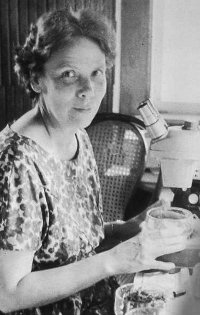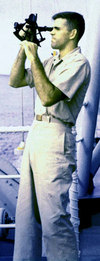1Support for Deuterostomia is weak; an indeterminate trichotomy among Xenambulacraria, Chordata, and Protostomia is the alternative. Positions of Nemertodermatida, Acoela, and Xenoturbellida reflect Redmond (2024).
2Hierarchy for Platyhelminthes reflects Egger et al. (2015) and Laumer & Giribet (2014)
database last modified: 16 October, 2025
Cite as "Tyler S, Schilling S, Hooge M, and Bush LF (comp.) (2006-2026) Turbellarian taxonomic database. Version 2.3 https://turbellaria.umaine.edu"
Traditional, pre-cladistic systems placed the flatworms in a single phylum, the Platyhelminthes, subdivided into the classes Turbellaria, Monogenea, Trematoda, and Cestoda. Turbellarians are the largely free-living flatworms---those that don't parasitize other animals---while the other classes encompass the obligate parasites, most of which live in or on the bodies of vertebrates. Turbellaria is, in particular, considered an invalid class because it is not monophyletic. (It is either paraphyletic--that is, having descendants, namely the parasitic classes, that are not classified within it [Ehlers, 1985]; or it could be polyphyletic--that is, having arisen from more than one ancestor, one for the acoels and another for catenulidans and rhabditophorans [Baguñà and Riutort, 2004; Phillipé et al., 2011]). The term "turbellarian" can still be applied to those worms that were formerly classified in the Turbellaria, but the term "Turbellaria" (specifically, the capitalized taxon name) would have to be written in quotation marks to indicate its paraphyletic status. Not all turbellarians are free-living.
In recognition of recent proposals based on molecular sequences (particularly of 18s rDNA, some Hox genes, and, most recently, fuller genomic data) the system displayed here treats the Acoela and Nemertodermata as separate from the phylum Platyhelminthes. The position and status of Acoela and Nemertodermatida have been volatile in morphology-based as well as molecular-systematics studies. They have been placed together in the group Acoelomorpha in more recent morphological studies, some molecular-sequence-based studies place either or both at the base of the animal tree of life, as the most basal bilaterians---that is, the most primitive of any animal phylum outside of the sponges and cnidarians. Phylogenomic studies place the Acoela either within the Deuterostomia (Philippé et al., 2011) or more basally as a sister group to all other bilaterians (Hejnol et al., 2009; Cannon et al., 2016). As a deuterostome, the Acoela would be in a phylum Xenacoela (Redmond, 2024) that includes also the enigmatic sack-like animal Xenoturbella. The Xenacoela would be sister group to the Nemertodermatida, in the taxon Xenacoelomorpha, which is itself placed as sister group to the Ambulacraria (Echinodermata + Hemichordata). Significantly, proposals that either Acoela or Nemertodermatida are most basal of all bilaterians are likely to be the result of statistical error (Philippé et al., 2019; Kapli & Telford, 2020; Redmond, 2024). Achatz et al. (2013) comprehensively review the morphological and molecular characters that apply to the placement of the Acoela.
The Platyhelminthes, as defined in all of these molecular systems, would be only distantly related to the Acoelomorpha and classified as a lophotrochozoan phylum, in a group with Amnelida and Nemertea (Philippé et al., 2019).
This taxonomic database covers all turbellarian flatworms, including parasitic turbellarians. The position of the major parasitic taxa (the other classes in the traditional system), encompassed now in the taxon Neodermata, is indicated in the hierarchy here in accordance with Egger's et al. (2015) transcriptomic-phylogenomic analysis. No neodermatans, themselves, are treated here, however.
References cited

|
| Louise Bush sorting turbellarians |
Data in this listing were initially compiled by Louise Bush using programs developed by Seth Tyler. Dr. Bush's last update to the database was in 1991, the year of her death. Since 1991, the database has been updated by S. Tyler, Steve Schilling, and Matt Hooge, with help from specialists on various groups of turbellarian platyhelminths, including Masaharu Kawakatsu, Ulrich Ehlers, Marco Curini-Galletti, Oleg Timoshkin.

|
| Steve Schilling collecting geographic data |
Availability of images is denoted with ![]() -symbols; these link to one or more images of
mostly systematic importance. Most of those of Rhabdocoela and Proseriata were
kindly provided by Tom Artois and Ernest Schockaert of Universitair Centrum,
Deipenbeek, Belgium; Matt Hooge, University of Maine; and Rick Hochberg,
Smithsonian Institution, Fort Pierce, FL. Images of Acoela, Prolecithophora,
and other Rhabdocoela were provided by Matt Hooge.
-symbols; these link to one or more images of
mostly systematic importance. Most of those of Rhabdocoela and Proseriata were
kindly provided by Tom Artois and Ernest Schockaert of Universitair Centrum,
Deipenbeek, Belgium; Matt Hooge, University of Maine; and Rick Hochberg,
Smithsonian Institution, Fort Pierce, FL. Images of Acoela, Prolecithophora,
and other Rhabdocoela were provided by Matt Hooge.
The data pertaining to the Acoelomorpha is the most reliable, having been
checked more thoroughly for accurracy in synonymy and literature citations.
Notes in this section (reached with the "notes" links and the ![]() -symbols by the taxon names) are transcriptions
from or images of index cards that Louise Bush maintained. They summarize
references to the taxa made in the literature (up to about 1991; more recent
notes are separated from Bush's with a horizontal line). Notes on groups
outside the Acoelomorpha are mostly in the form of images of index cards. Steve
Schilling transcribed Bush's notes and scanned the cards for this database. He
is also entering biogeographical data.
-symbols by the taxon names) are transcriptions
from or images of index cards that Louise Bush maintained. They summarize
references to the taxa made in the literature (up to about 1991; more recent
notes are separated from Bush's with a horizontal line). Notes on groups
outside the Acoelomorpha are mostly in the form of images of index cards. Steve
Schilling transcribed Bush's notes and scanned the cards for this database. He
is also entering biogeographical data.
Entry of data on the geographic distribution of species was supported in part by the Ocean Biogeographic Information System (OBIS). Steve Schilling is handling these data, gathering collection records of turbellarian species world-wide (both marine and freshwater). Species for which data have been entered are flagged with a "dist'n hyperlink, and clicking on this hyperlink will list those records. Maps of those collection sites can be reached using the map hyperlink and the map all distribution points at the end of each listing. (Resources we use for determining geographic coordinates of collecting sites and for drawing maps [Google Maps and Topozone] are listed separately: mapping resources.)
This is a work in progress. Copyrights for images remain with the original print publishers. Please send corrections to Seth Tyler,-->Seth Tyler, E-Mail "styler at maine dot edu"
database last modified: 16 October, 2025
Cite as "Tyler S, Schilling S, Hooge M, and Bush LF (comp.) (2006-2026) Turbellarian taxonomic database. Version 2.3 https://turbellaria.umaine.edu"

This material is based upon work supported by the National Science Foundation under Grant No. 0118804.